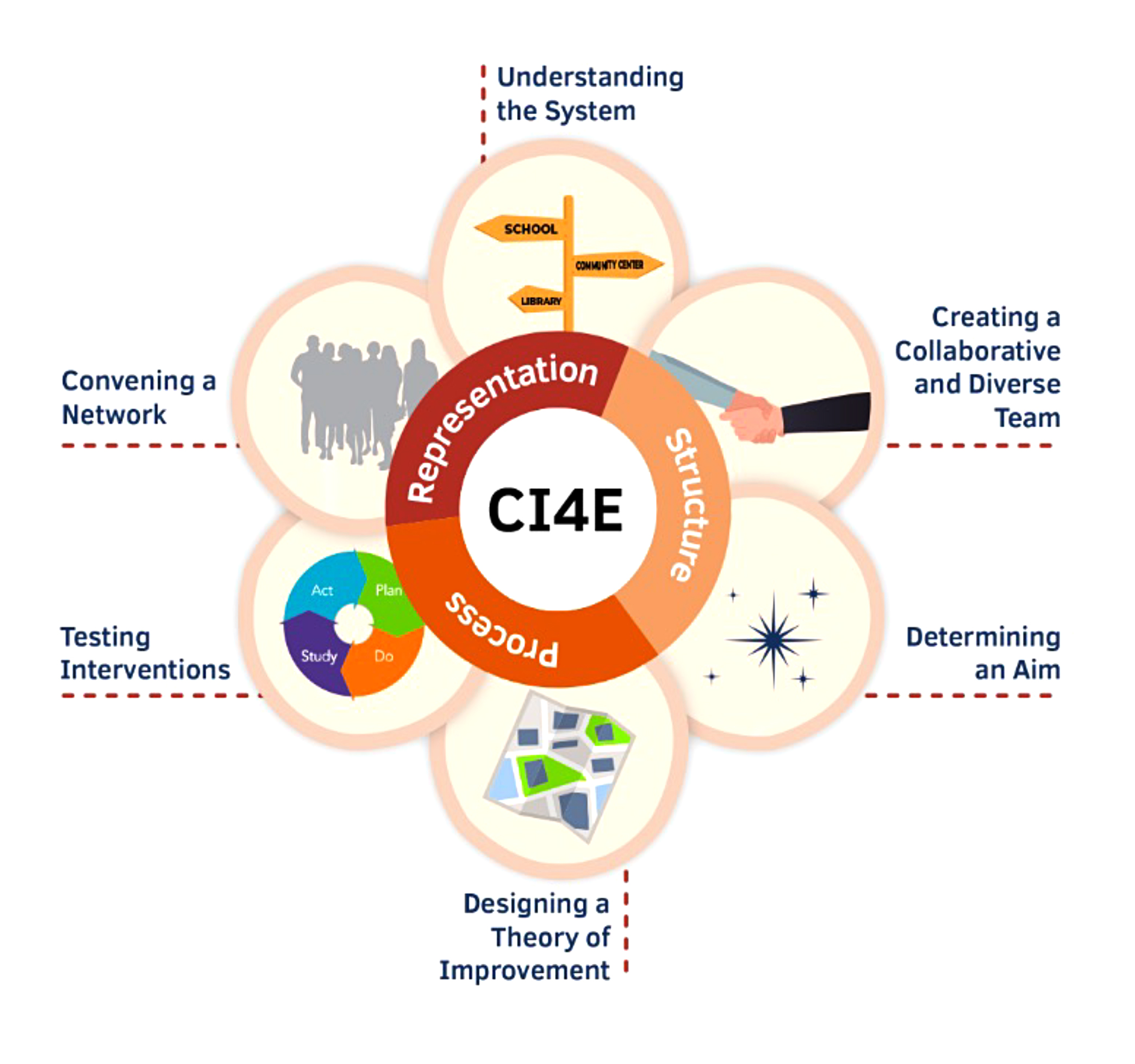
Crafting a Schoolwide Equity Initiative
The principal has a pivotal role in building equity through continuous improvement.
Topics: Equity and Diversity
With equity being a fundamental priority in today’s schools, principals hold a powerful role in ushering in the initiatives that can make the priority into a reality. They can establish policies, allocate resources, and advocate for a culture in which all students are valued and have the opportunity to thrive.
Achieving equity is not a straightforward task, however; it requires a clear understanding of the complex barriers students face and continuous, intentional efforts to dismantle those barriers. Principals can lead effective, sustainable equity initiatives by building a shared vision, conducting thorough assessments, engaging the school community, and implementing actionable strategies.
Since writing this article late last year, U.S. education has undergone rapid shifts, and schools should expect additional changes in the years ahead. Principals must reaffirm their commitment to fostering academic success, well-being, and opportunities for all students.
Moments like these are opportunities to adopt new tools and approaches that ensure all members of the school community thrive. Ultimately, the greatest success and most enduring change stems from grounding a child’s education in their unique experiences and providing tailored supports that meet their needs.
Establish a Vision for Equity
Establishing equity begins with an unwavering commitment to ensuring that each student has access to the opportunities, resources, and supports they need to succeed. For principals, this means taking steps to define a clear, shared vision for equity in their schools. By articulating a vision that prioritizes inclusive practices and recognizes the diverse needs of students and staff, principals set the tone that everyone is valued and essential to a pathway to success.
Principals are the key to facilitating thoughtful discussions with staff, students, and community members that define what equity looks and feels like in their school-specific context.
For some schools, this might mean establishing procedures to address language barriers or a policy regarding accommodations for students with disabilities. For others, it might involve ensuring that the school has a clear mission statement regarding educational equity.
Principals can ask:
- What does equity look like in our school?
- What are the specific challenges our students face?
- Are there specific groups of students who do not have access to resources?
- How can we create a culture in which every student feels valued and supported and experiences a sense of belonging?
The answers to these questions will help form the foundation of an equity vision that’s co-created with input from a diverse group of school community representatives.

The CI4E approach stresses engagement.
Embed Equity Into Continuous Improvement
MAEC has developed the CI4E model as an approach to systemic change in education that reframes the traditional continuous improvement (CI) process to prioritize equity.
CI4E focuses on addressing disparities and promoting inclusivity by emphasizing the engagement of those most affected by inequities, empowering them to shape solutions, and reworking structures that support equity within education. Success is measured by the reduction of inequities and the empowerment and achievement of marginalized groups.
Principals can implement the six phases of CI4E into school practices to make the model a core element of the school’s mission to ensure the success of all students:
1. Understanding the system. This stage examines the historical and current factors that contribute to inequities in schools and communities. Principals can prioritize insights from marginalized groups and steer teams toward inclusive practices. By highlighting the need to understand the roots of inequity, principals encourage awareness that can move schools from unintentionally reproducing exclusionary practices to the intentional disruption of inequitable structures and the creation of educational practices that reduce inequities.
2. Creating a collaborative and diverse team. Equity-centered efforts require diverse teams that reflect the communities served. Principals are essential in bringing together varied voices including staff, students, families, and community representatives; addressing power dynamics within the group; and embedding equity into team norms and decision-making. Principals also model inclusive decision-making structures and set norms that encourage equitable participation, fostering a school culture that values diverse voices and belonging.
3. Determining a goal. As the team defines goals for the CI4E process, principals should maintain their focus on community needs and establish a clear direction toward meaningful, positive change in the school-specific context. Setting an equity-focused goal helps center the effort on the communities most affected by inequity and select measures using an asset-based approach.
4. Designing a theory of improvement. Principals lead the team in developing a theory of improvement that reflects the strengths, needs, and aspirations of students and communities affected by inequity. They ensure that the theory is grounded in relevant research, data, and community input and oversee the creation of a flexible, evolving plan that continually seeks to identify and close equity gaps.
5. Testing interventions. Principals support the team as they test interventions. They encourage incorporating feedback from students, staff, families, and communities impacted by inequities, ensuring that communication remains open and transparent throughout. Principals lead the team in assessing whether interventions address identified needs effectively, adjusting strategies to achieve meaningful student improvements.
6. Convening a network. Principals facilitate connections with other educational networks and organizations committed to equity, helping build a supportive network that fosters innovation and shared learning. The network can expand the school’s capacity for improvement, creating an environment that supports new ideas, challenges inequitable practices, and sustains equity-focused change.
In implementing the CI4E process, principals champion equity by actively guiding their teams, embedding inclusivity in every aspect of the improvement process, and leading by example. This ensures that continuous improvement is a transformative effort to create a culture that supports and values every student, educator, and member of the school community.
Conduct an Equity Audit
Before implementing changes, principals should conduct an equity audit to assess the current state of their school’s practices and policies. MAEC’s tools help educators develop a more concrete understanding of what it means to implement equity and reflect on whether current school policies, procedures, and practices are equitable.
MAEC created its first equity audit in 1992. Based on lessons learned from the organization’s involvement with districtwide diversity, equity, inclusion, and belonging initiatives, the audit has been refined to support schools and districts in promoting educational equity, identifying educational gaps, removing systemic barriers, and creating accountability and buy-in across the school community.
The MAEC Equity Audit Tool includes three questionnaires: school-level, classroom-level, and teacher behavior. They help school leaders, educators, and staff determine if the school community is creating a positive, equitable learning environment that allows students and staff to perform at their highest levels. Using individual ratings and a school-based consensus team process, the tool involves diverse voices from the school and community. Impactful principals approach equity audits with the understanding that the process is only a starting point—a snapshot of the district’s or school’s current state of equity. It can’t cover every systemic barrier or address all groups that might lack support, but it can highlight key issues. Armed with the findings, principals and district leaders can conduct further data collection and analysis, including qualitative data such as classroom observations, climate surveys, and focus groups.
Prioritize Professional Development
In order for equity initiatives to succeed, staff members must be equipped with the knowledge and skills to engage in the work. As principals strive to establish meaningful initiatives at the school level, they must be responsive to staff needs and build capacity.
Professional development opportunities might address a variety of topics, including culturally responsive teaching, implicit bias, restorative practices, self-awareness, and trauma-informed practices. Regularly revisiting these topics can sustain momentum, allow staff to reflect on individual growth, and continuously strengthen the school’s commitment to equity.
Engage Families and Community Partners
Building an equitable school requires buy-in from members of the school community. By encouraging open dialogue, principals can create an environment in which everyone’s voice is valued and equity initiatives can be tailored to the community’s needs.
Families bring valuable perspectives, insights, and funds of knowledge that can inform equity initiatives, and community organizations can often provide resources that support these efforts. Principals should seek to build trusting, authentic relationships with families, especially those from historically marginalized groups who might feel disconnected from the school community.
When partnering with schools and districts, MAEC supports the following strategies:
- Host open forums, community conversations, or focus groups in which families can share their experiences and concerns;
- Establish advisory or equity audit steering committees that include family representatives to offer guidance on equity issues; and
- Partner with community organizations that offer services such as mental health support, tutoring, and enrichment programs.
Principals can also update schools’ definitions of leadership that are inclusive of cultural perspectives and address each family’s unique needs. For example, a principal may work with a group of staff, families, and community representatives in order to co-construct the school’s approach to leadership and overall equity initiatives. This promotes trust, strengthens family engagement, and creates a school culture that authentically values diverse contributions.
Leading equity initiatives requires courage, empathy, and an unyielding commitment to justice. As principals lead the ongoing equity journey, they empower their schools to be places where all students feel valued, supported, and prepared to thrive. Through intentional action, principals have the power to make it more possible for equity to become a reality, creating lasting impacts that benefit students, families, and society as a whole.
Kailanya S. Brailey is the project director of MAEC’s Consortium for Engaging Families Across Maine (CEFAM).

